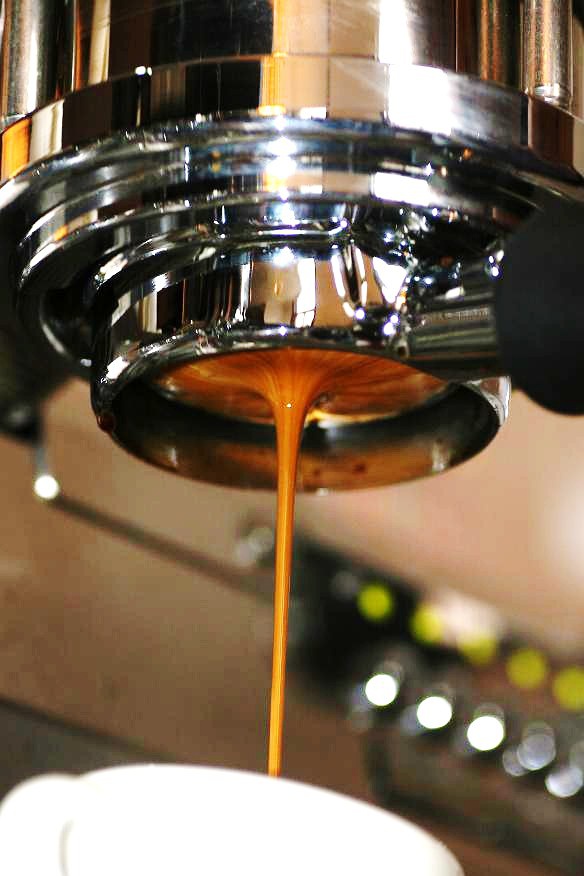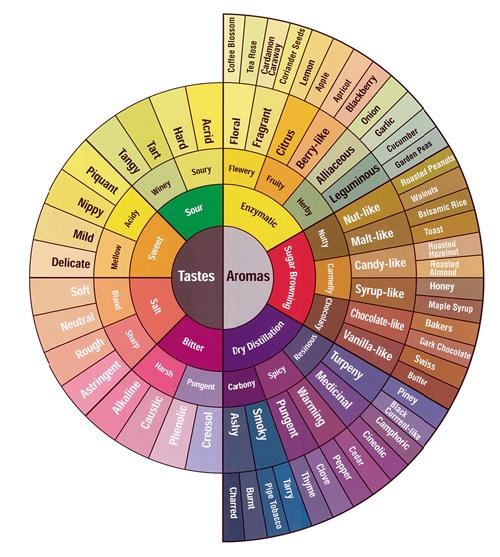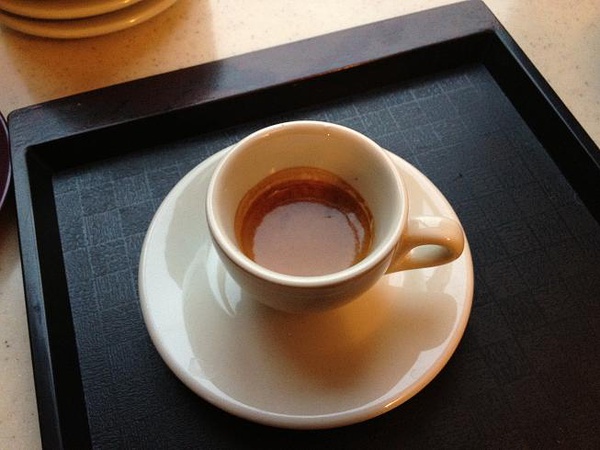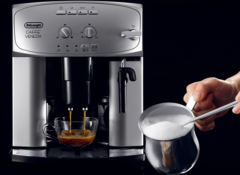Italian Fancy Coffee introduction Italian concentrate (Espresso)
As I mentioned in my preface, there is no such strict structure in the standard setting of Italian enrichment. Especially in the early days of its birth, it is itself a product under a pressure cooker. However, after World War II, the concepts of mass production, standardization, and quality are extremely important. In Espresso Coffee's book, it is also mentioned that the concept of quality, quality is also born after industrialization, an assessment of defective rate. So later, Andrea Illy's grandfather, Dr. Ernesto Illy, who is also the author of the book, began to try to set a series of standards for cappuccino, that is, nine atmospheric pressure (previously set to seven atmospheric pressure), through about 92 degrees of hot water, extract about 30ml coffee from 7g of coffee powder in about 25 seconds, which we call Italian concentrate.
This is Dr. Illy in the production system, developed a set of parameters to facilitate the consistency of our products.
If we refer to the Italian Coffee Association's standards again,
The perfect Espresso
An hazel-brown to dark-brown foam-characterised by tawny reflexes-with a very fine texture. An intense scent with notes of flowers, fruits, toasted bread and chocolate. All of these sensations are felt also after swallowing the coffee in the long lasting aroma. Its taste is round, substantial and velvet-like. Sour and bitter tastes are well balanced. There is no, or a barely perceptible, astringent taste.

They also correspondingly set a series of standards for the perfect espresso through all kinds of senses. (http://espressoitaliano.org/eic_en.asp?lang=en)
Of course, if we participate in the American Fine Coffee Association, they have also set the standard for the composition of coffee, that is, the Italian concentration extracted will have an extraction rate of about 18%, 21%, and the concentration of TDS is about 8%, 11%.
From this we can see that there are standards for the industry. But there is a problem here, that is, the absoluteness of the standard and its limitations.
If I set the concentration of coffee at 8% Mur11% and the extraction rate within the range of 18% Mur21%, I am afraid we may not get our favorite coffee; moreover, according to Dr. illy's standard, it may not be in an absolute range, because testing the volume of espresso itself is a relatively vague concept, for example, the thickness of oil is a dynamic variable. It is true that the Italian Coffee Association's description of perfect espresso is quite specific, but the question is, how can sensory experience be quantified? And the ingredients are different from place to place, so it is difficult to distinguish them quantitatively. When my baking teacher used to bake coffee beans and asked me to take them home to share with my friends, he had a habit of not preconceiving to describe the flavor or even the origin before the evaluation. "even if your Chinese friend drinks fried rice, please tell me." of course this is a joke, but here is a sensory evaluation method that has to be mentioned, that is, to use the most common ingredients around us to describe the taste of coffee.
Having described so much, the first thing I want to express here is that the existence of standards must be relative. But the relative here, rather than the implementation of indicators, rather, these rules and regulations, is to find us a framework, and we, as baristas, are to find the best point in this framework. At this point, there may be some deviations because of the sensory differences of baristas, but at least with the framework of these standards, we can try our best to have a common cognitive surface in the process of communication.
The second thing I want to express is Italian concentration, by this standard, what we should not drink is a bitterness-oriented liquid. Indeed, in today's society, if you ask loudly what espresso tastes like, it is estimated that at least 80% of people will shout bitterness. Of course, this is a helplessness, but it also reflects from the side that it is necessary to have these standards for a good espresso.
Third, if you pay too much attention to the deviation of nouns, foolishly think that it may not make much sense. Because many of our descriptions of the senses may not be able to convey exactly the same message to each other. For example, according to the division of the flavor turntable, to the fourth layer, lemon flavor and apple flavor are two branches of citrus flavor. But I don't think the vast majority of baristas can sharpen their senses to analyze the fourth layer. So even if the barista inadvertently put the apple flavor of the original lemon flavor, I think, from a tolerant point of view, or the barista's insight, at least he sensed that it was citrus flavor.

Indeed, espresso is based on this cup of 30ml's espresso. We have a lot of standards, understand, understand, and try again, we can analyze other espresso-based espresso step by step.

Today's only espresso, Purple 2.1has obvious white grape flavor, while cocoa flavor is more obvious due to the degree of baking. The final finish is smooth with a hint of dried fruit.
Important Notice :
前街咖啡 FrontStreet Coffee has moved to new addredd:
FrontStreet Coffee Address: 315,Donghua East Road,GuangZhou
Tel:020 38364473
- Prev

How to make a good cup of espresso
Over the past two years, more and more friends have joined the ranks of espresso, which can be said to be an unprecedented increase. I would like to share some personal experiences and summaries here to avoid a large cultural background and serve only as a technical tutorial for a good drink or cooking a good dish. First, enough fine and uniform coffee powder esp extraction has a higher pressure, so it is necessary to use enough fine powder. On the premise of detail
- Next

What if the steam sprinkler of Italian coffee machine is blocked?
Can be solved in the following ways: after turning off (or before turning on), wrap the nozzle with a towel, which is mainly to prevent skid and protect the nozzle from scratching the surface of the tool, then clamp it with pliers, move the rotating pliers to remove the nozzle, and use a fine needle and cotton stick to clear the spray eyes and remove the dirt, so that you can easily clean the nozzle or nozzle. In addition, if it is really not convenient to unload
Related
- Detailed explanation of Jadeite planting Land in Panamanian Jadeite Manor introduction to the grading system of Jadeite competitive bidding, Red bid, Green bid and Rose Summer
- Story of Coffee planting in Brenka region of Costa Rica Stonehenge Manor anaerobic heavy honey treatment of flavor mouth
- What's on the barrel of Blue Mountain Coffee beans?
- Can American coffee also pull flowers? How to use hot American style to pull out a good-looking pattern?
- Can you make a cold extract with coffee beans? What is the right proportion for cold-extracted coffee formula?
- Indonesian PWN Gold Mandrine Coffee Origin Features Flavor How to Chong? Mandolin coffee is American.
- A brief introduction to the flavor characteristics of Brazilian yellow bourbon coffee beans
- What is the effect of different water quality on the flavor of cold-extracted coffee? What kind of water is best for brewing coffee?
- Why do you think of Rose Summer whenever you mention Panamanian coffee?
- Introduction to the characteristics of authentic blue mountain coffee bean producing areas? What is the CIB Coffee Authority in Jamaica?

